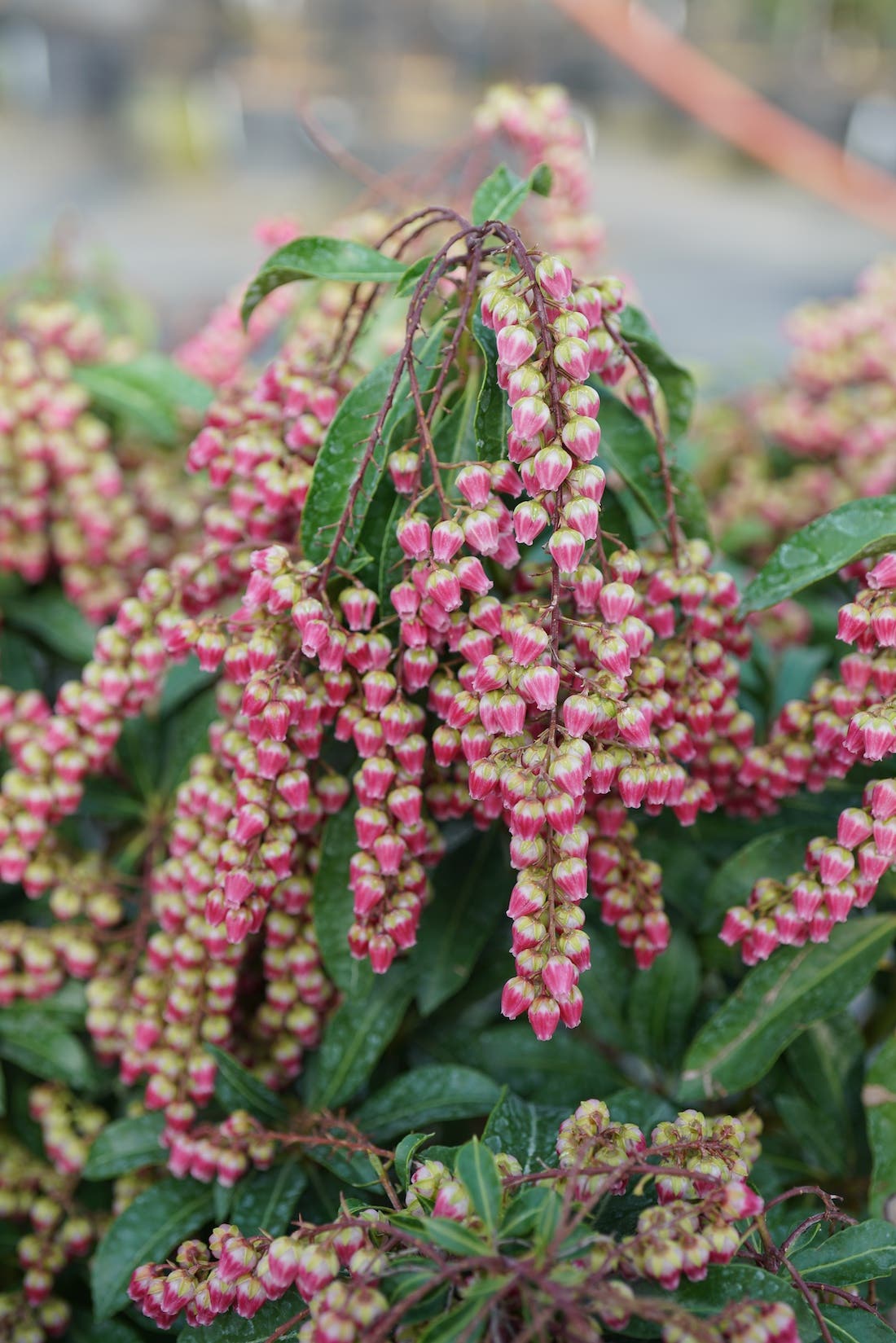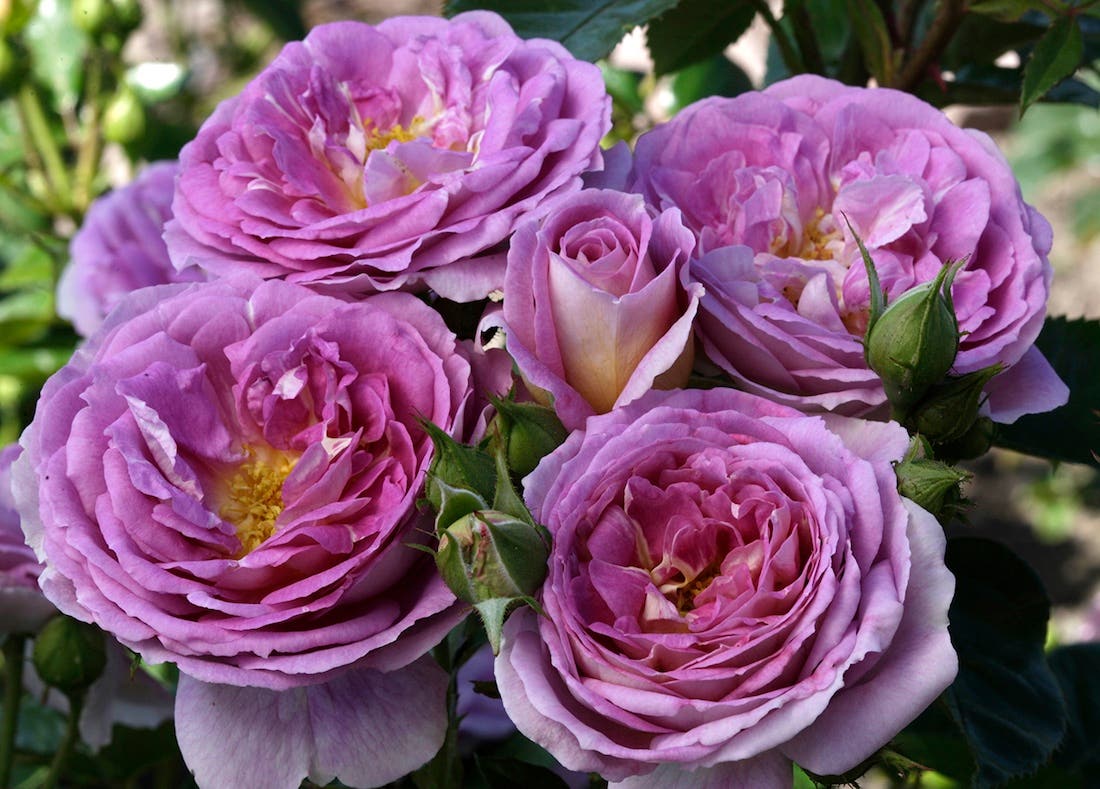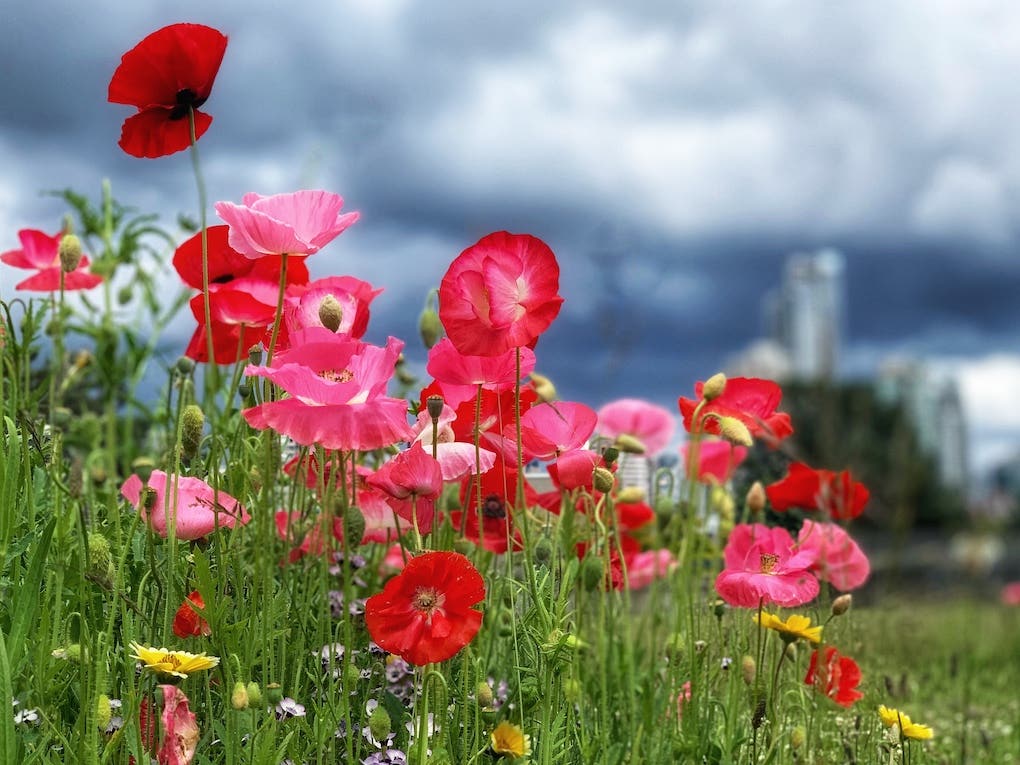All About Trout Lilies
Trout lilies (Erythronium) are great spring-blooming wildflowers for shady gardens.
Gardeners like the prospect of growing older, I suspect, for nothing more than the prerogative to say with more authority the things they believed when they were younger and to demand of the current young generation that they give attention to certain neglected groups of plants. Of those overlooked genera, none, to my mind, is more deserving of a fresh look than Erythronium.
As the snow melts in the woodland and alpine meadow habitats of the Northern Hemisphere, expansive sweeps of the approximately 15 known species provide a dramatic flash of color against the early spring landscape. Delicate, nodding lanterns comprising six strongly reflexed petals, in shades of yellow, white, or pink, possess inner markings surrounding a bright yellow center (on many species). These flowers rise above pairs of succulent, glossy green leaves that are often dramatically marked in brown-purple. It is a plant that, once witnessed at its height of blossom, demands to be known and, once grown in the garden, must be had in large numbers.
AN EARLY SHOW
Erythroniums are members of the large assemblage of spring ephemerals in the Liliaceae family. Like other geophytes that get the business of blossoming and setting seed done early in the season while sufficient soil moisture exists, they are ideal for naturalizing in woodlands and/or meadows, particularly in soils that become progressively more parched throughout the summer. Within only weeks of an erythroniums spectacular showing, all that remains visible are bleached skeletons of the flowering stems and rattling carpels of seed. Looking 15 inches below, one would find the narrow, canine-toothlike bulb that gave rise to one of this plant's less euphonious common names, the dog-tooth violet.
There are, however, other more pleasing monikers. Many of the American vernacular names reflect the plant's early flowering season: fawn lily, trout lily, avalanche lily. The genus name Erythronium, referring to the Greek and Latin words for red-flowering, indicates the historical use of E. dens-canis, the first species to be described, as a source of red dye.
That E. dens-canis entered Western horticulture before any other species is no surprise. It is the only European one, transmuting itself into various shapes and forms as it marches eastward across Eurasia and into the highlands of Japan. The most northern continental population of this species, classified by some taxonomists as E. sibericum, is one of the hardiest, tolerating temperatures in USDA Zone 3. Because of its adaptability and hardiness, E. dens-canis is probably the most commercially available of all species, in several named color forms.
NATIVE DELIGHTS
It is to North America, however, that one must travel to really learn of the breadth of this genus and its potential, a fact that keen European gardeners embraced over a century ago. “America too has sent us a number of species that not only have flowers in shades of cream and white and gold, but also carry two or three of them at rare distances on a stem of perhaps eight inches or more, and contrive to look as if they had seen the unknown Queen of all Martagon Lilies passing by, and had faithfully remembered her beauty,” wrote Reginald Farrer with typical flair in his 1913 tome on rock gardening. Eastern North America hosts the charming E. americanum, with demure yellow, brown-stained flowers held above handsomely mottled leaves of bluish green. This was among the earliest of the woodland herbs in the deciduous woodlands of my Northern Michigan youth, sharing shaded sandy soils with Trilliums and morel mushrooms.
Under cultivation, E. americanum has a reputation for shy flowering. This might depend more on genetics of the cultivated plants, however, than on the conditions provided in the garden. Dr. Richard Lighty, former director of the Mt. Cuba Center for Piedmont Flora, outside Philadelphia, has observed that different populations choose distinctive procreative pathways. Those originating in areas where there is high leaf litter accumulation on the woodland floor seem perfectly content to put energy into spreading vegetatively by stolons rather than blossoming. In sites where forest litter is absent by spring, populations are composed of o individuals more willing to be clump forming and to procreate by seed.
The greatest amount of erythronium speciation occurs along the Western Coast, in the mountains of the Cascades, Olympics, and Sierras. The earliest to flower in the Pacific Northwest, and the first to truly captivate me, is E. revolutum. It emerges from the soil soon after the days become noticeably longer in late February and early March. Robust glossy green leaves, deeply marbled in plum, provide the perfect foil for its flowers of enchanting deep pink, each with dramatically re-flexed petals (hence the specific epithet). A mature clump may produce as many as thirty flowers, which at their peak appear to be a troupe of brightly clad, high-jumping Russian dancers.
The so-called Easter lily or white fawn lily, E. oregonum, is found from northern Oregon through Washington to Vancouver Island in British Columbia. It offers very large, generally single, white flowers above its brace of striking mottled leaves. Though generally absent in commerce, among cognescenti it is considered one of the most beautiful of our native wildflowers. There is no reason it could not be as welcomed into cultivation, as it accepts a range of conditions, from shaded woodland to sunny grassy meadows, and has proven to be easy and free-flowering in the garden.
The Sierras and Coastal Ranges of California probably host the greatest concentration of erythronium species, and it is here that the most cooperative yellow flowering species occur. Erythronium tuolumnense, from Tuolumne County, grows at low to moderate elevations where it erupts in early spring with fresh green unmottled foliage and bright yellow flowers. This species is one of the parents of two of the most celebrated erythronium hybrids, ‘Kondo’ and ‘Pagoda’. Both exhibit the hybrid vigor one would expect, with large glistening green leaves slightly mottled with copper, and a long display of large and vivid butter yellow flowers. Owing to their readily clumping nature, ‘Kondo’ and 'Pagoda are among the most offered of all erythroniums and certainly worth inclusion in the garden.
Although the other parent of these hybrids is not known with certainty, many suspect the white-flowered E. californicum, which has handsome brown marbled foliage and creamy white flowers etched in the center with tangerine markings. In an undiluted form, it too makes a vigorous and free-flowering addition to the garden.
CARE AND COMPANIONS
As my experience with erythroniums increases, so too does my reluctance to pigeonhole them as to their precise needs. For 17 years, I have grown most of these species in light shade, under a high canopy of Douglas firs. The soils are humus rich yet well drained, moist in winter and spring but tending toward hydrophobic in late summer and autumn. Under these conditions I have successfully cultivated most of the species mentioned here. It was not until beginning our second garden and encountering (with great joy) an enormous floriferous colony of E. revolutum spreading through extremely rocky, sandy soils that I began to understand their ability to withstand substantial drought. This colony, now amounting to thousands of plants, thrives not far from the base of a large Thuja plicata, a notorious water hog in our region.
Combining erythroniums with other spring ephemerals is generally an easy matter. Gardeners attracted to such plants will generally already have a bevy of good bedfellows. Hellebores of all kinds assort well with fawn lilies even though they will have faded somewhat in intensity by the time the erythroniums are at their best. Blue and pink pulmonarias are also good companions, as their jumbo spotted leaves will spread out and fill the void left by the erythroniums when they depart in June. (We generally cut the first flush of pulmonaria back after flowering to rejuvenate mildew-damaged foliage.) I am especially fond of the spring vetchling Lathyrus vernus, whose bicolor pink-and-magenta “sweet peas” commingle beautifully with Erythronium revolutum and others.
To expand the season of interest, consider interplanting your erythroniums, and other geophytes, with autumn- and winter-flowering cyclamen (C. hederifolium and C. count, et. al.). The foliage of the cyclamen will be nearly departed by the time the erythroniums emerge in spring. By the time their foliage is spent in midsummer, the first flowers of cyclamen will just be beginning to appear.
Erythronium Propagation
Erythroniums can be propagated by seed as well as by division. I have lifted and separated clumps during the growing season; however, it is better to wait until the foliage is just beginning to falter in early summer. Be aware that, particularly in well-draining soils, the bulbs will have put themselves surprisingly deep; it is not necessary to replicate this situation upon replanting. A depth of five to six inches will suffice.
Propagation by seed comes with its challenges as well as rewards. The seed should be sown as fresh as possible, just as the capsules split. Though the grasslike seedlings will appear the following spring, it will take an additional two years before they become recognizable as erythroniums, and it will be two to three years after that before inaugural blossoming. As Graham Stuart Thomas once commented, manure the entire process with patience.
Once flowering commences, a ready supply of self-sown seedlings will appear throughout the garden, though we deliberately spread the seed to areas that are devoid of their early spring charms. With so many species now in close proximity to one another, we are enjoying the added dimension of observing a plethora of open-pollinated hybrids appearing.







